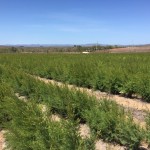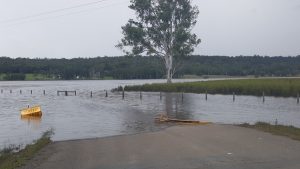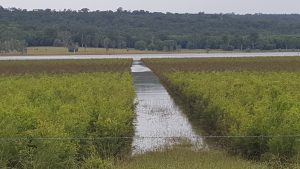Tea Tree Oil Australia Melaleuca alternifolia Harvest: May - November
 There were some initial worries that the dry summer had caused leaf drop in the Northern Rivers and Port Macquarie regions which could lead to a 20% biomass loss from the areas that contribute 85% of Australia’s tea tree oil production. Some of these concerns had been offset by the fact that we expected some newer plantations to come online and that in recent years yields have been increasing through better farming practices and better seed stock.
There were some initial worries that the dry summer had caused leaf drop in the Northern Rivers and Port Macquarie regions which could lead to a 20% biomass loss from the areas that contribute 85% of Australia’s tea tree oil production. Some of these concerns had been offset by the fact that we expected some newer plantations to come online and that in recent years yields have been increasing through better farming practices and better seed stock.
However, during March torrential rains have caused flooding in many parts and the results could be catastrophic. Two successive floods in the space of 3 weeks, including the aftermath of Cyclone Debbie, hit the coast around Bowen, Queensland and travelled south along the coastline. Parts of the Northern Rivers area have been hit the hardest with approximately 900 mm of rain over 4 weeks compared with just 160 mm during the same period last year.
The flooding issues were compounded by the water not being able to recede due to king tides at the local beaches, as floodwaters cannot exit during this time. This has meant water has been sitting over the crop for 3-4 weeks and continues in some areas leading to more leaf loss and some uprooting of trees. It has also destroyed around 300 ha of young plantations, which had been a major investment of one large grower in the past year.
Another issue arising from these floodwaters is potential pest damage as most farmers are unable to get tractors and heavy equipment onto their farms to spray at this important time of year.
The losses are significant as will be the impact on the market over the next weeks and months. Losses from the Northern Rivers and Mid North Coast will be down around 50%, whilst in other areas (of lower production) losses will be around 25%. Overall we may be looking at a crop reduced to a half of what we have come to expect in recent times. It could be the lowest production for a number of years, when demand wasn’t so great.
Price speculation has started, as some farms need to buy locally to supplement their committed sales. For those less affected by the weather they are already demanding price increases of 40%!
 Ultra International B.V.
Ultra International B.V.



